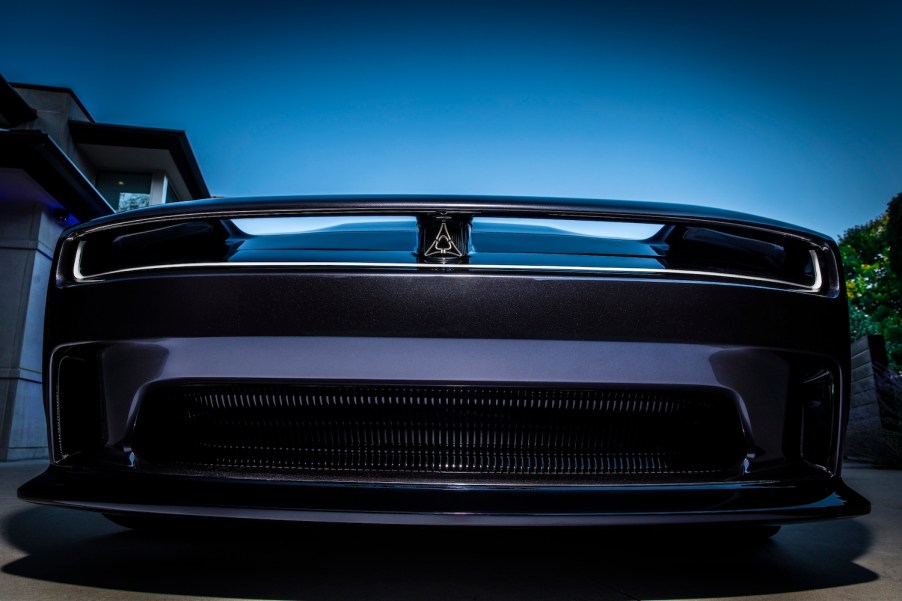
Is the Dodge Charger Daytona SRT EV’s ‘R-Wing’ Just for Looks?
Dodge is reinventing the muscle car for the electric era. The all-new Charger Daytona SRT EV concept car looks very much like the Chargers we know and love, but it is driven by Dodge’s new eMuscle powertrain. One interesting element of this electric concept car is the “R-Wing” element of its front fascia. While this wing helps it retain the recognizable shape of a classic Charger, Dodge also claims the aero element keeps the AWD car planted at high speeds.
The new R-Wing helps the Dodge EV retain a classic Charger shape

When Stellantis unveiled its new Charger EV concept, many Dodge fans were struck by just how much it looked like the old Charger. This was especially surprising consider it features a skateboard-shaped eMuscle powertrain and no internal combustion motor under the hood.
Cars such as the Porsche Taycan have taken advantage of the skateboard shape of electric chassis to dramatically lower the hood. Other cars, such as sedans from Tesla, have taken the opportunity to offer a large front trunk. But Dodge went in a very different direction.
At the front of the 2022 Dodge Charger Daytona SRT EV concept is an interesting feature. Its hood is lower than an internal combustion Charger, but its front fascia is nearly as tall. On top of its grille, elevated above the hood, is an aero element Dodge calls the “R-Wing.” This puts the top of the “grille” and the headlights at a similar height to that of the current Charger.
The Charger concept’s “R-Wing” creates downforce

At the front of the new electric Dodge Charger is a tall front fascia and an “R-Wing” aero element. This design is actually engineered to create downforce. Air passes through the “grille” at the front of the Charger. Then it flows up over the roof of the car. At higher speeds, this airflow keeps the front wheels of the AWD car firmly planted on the ground.
Air then passes over the roof of the Charger Daytona SRT EV and onto its elongated back deck. Just like the current SRT Chargers, the Daytona SRT has a small rear spoiler engineered to keep the rear wheels planted on the ground at high speeds.
Dodge has yet to release performance numbers for its Charger EV concept car. For this reason, we don’t yet know how effective this eMuscle coupe’s aerodynamics package actually is. But other supercars have various methods of allowing air to pass through the front of the car and over the hood to increase downforce. Examples includes the distinct fender pass-throughs on front-engine Ferraris and the air passages under the hood of the latest NASCAR stock cars.
The R-Wing inspired the Charger Daytona SRT’s name

The latest Dodge Charger EV concept is far from the first Dodge muscle car with dramatic aerodynamic elements. The most extreme example is the homologation run of Dodge’s 1969-1970 NASCAR stock car: the Dodge Charger Daytona and Plymouth Superbird. These muscle cars were defined by their tall rear spoiler. The spoiler gave them such an advantage in stock car races that NASCAR had to change its rules.
Because the new Charger EV concept features a unique front wing, and because Dodge wants to remind us it still honors its past, it has named its EV concept the Daytona.
Next, read all about the electric Charger’s Fratzonic chambered exhaust system or watch Dodge’s official reveal of its Charger Daytona SRT concept in the video below:



